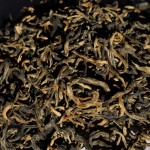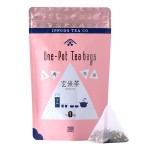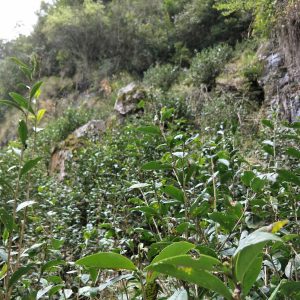Home › Dialogues › Tea Making › long’jing and infusion techniques
- This topic has 8 replies, 8 voices, and was last updated 11 years, 1 month ago by
Longjing 43.
-
AuthorPosts
-
-
2013.03.08 at 4:41 am #8549
lamppost
ParticipantHi Guys,I am new with Longjing, and I hope that you can guys can help me answer this question.How many times can you infuse 4g of Longjin in a 150ml gaiwan to have a satisfy drink(s)?
I have followed Leo’s suggestion from this article https://www.teaguardian.com/how-to-make-tea/tea-brewing-basic-idea.html#.UTmwMaV4-1w, and I could infuse the leaves 2 times. However, I cannot get much from the infused leaves after the second infusion.Thanks. -
2013.03.08 at 9:36 am #9557
Longjing 43
ParticipantBefore I learned about Leo’s style, I used to use tall glass without lid. That is good for almost all green tea, but I never knew the true taste of Longjing until after I learned Leo’s style. Either way, you don’t get more than two times infusion. That is true also for most other green tea, unless you make infusion time very short and more tealeaves. But that way you don’t taste true taste of the green tea, unless it is like gyokuro. Gyokuro is rolled many times like oolong or black tea so taste easy to come out. Longjing is not. Old style green tea Longjing or others not like oolong or puerh.
-
2013.03.08 at 10:14 am #9539
lamppost
ParticipantThanks Longjing 43.
I thought that I wasted the valuable leaves.😛
-
2013.03.08 at 12:42 pm #9540
zachno
ParticipantDoes that mean if I want a quicker green tea, I should use gyokuro, and when I have plenty of time, I use Longjing?
-
2013.03.15 at 9:36 am #9494
ICE
ParticipantI agree. Gyokuro, sencha and other roll-twisted steamed green tea infuse much quicker than roasted or original shape baked green tea.
-
2013.03.21 at 9:57 am #9357
Leo
ParticipantThe more broken down the tissue structure of the tea leaf, the quicker the infusion time. That is why broken grades infuse much faster. More so those fannings, dustings etc. Puer teas, the shu type, is very broken down too (mechanically and biologically) and infuse most readily amongst traditional teas. Twisted teas come the next. Most black teas, oolongs, sheng puers and some green teas are roll-twisted. Original shape leaves the slowest. The tissue structure in almost all genuine quality white teas are untouched. That is why they infuse the slowest and most steadily.
-
2013.03.21 at 2:44 pm #9359
MEversbergII
ParticipantAh, that explains why it is much more difficult to oversteep (“stew”) white teas, both needle and peony.
M.
-
2013.03.23 at 12:50 am #9353
Betty
ParticipantThat explains why mostly oolong and puers are used in gongfu infusion. However, I find that even with them, using longer infusion time and less tealeaves is much easier to get better tasting tea.
-
2013.03.25 at 1:38 am #9316
tea soul
ParticipantIf you use good quality rolled green tealeaves, you can use lots of tealeaves, short infusion time and many times infusion for same leaves. But perhaps same amount of tea per gram of tealeaves overall.
-
-
AuthorPosts
- You must be logged in to reply to this topic.










